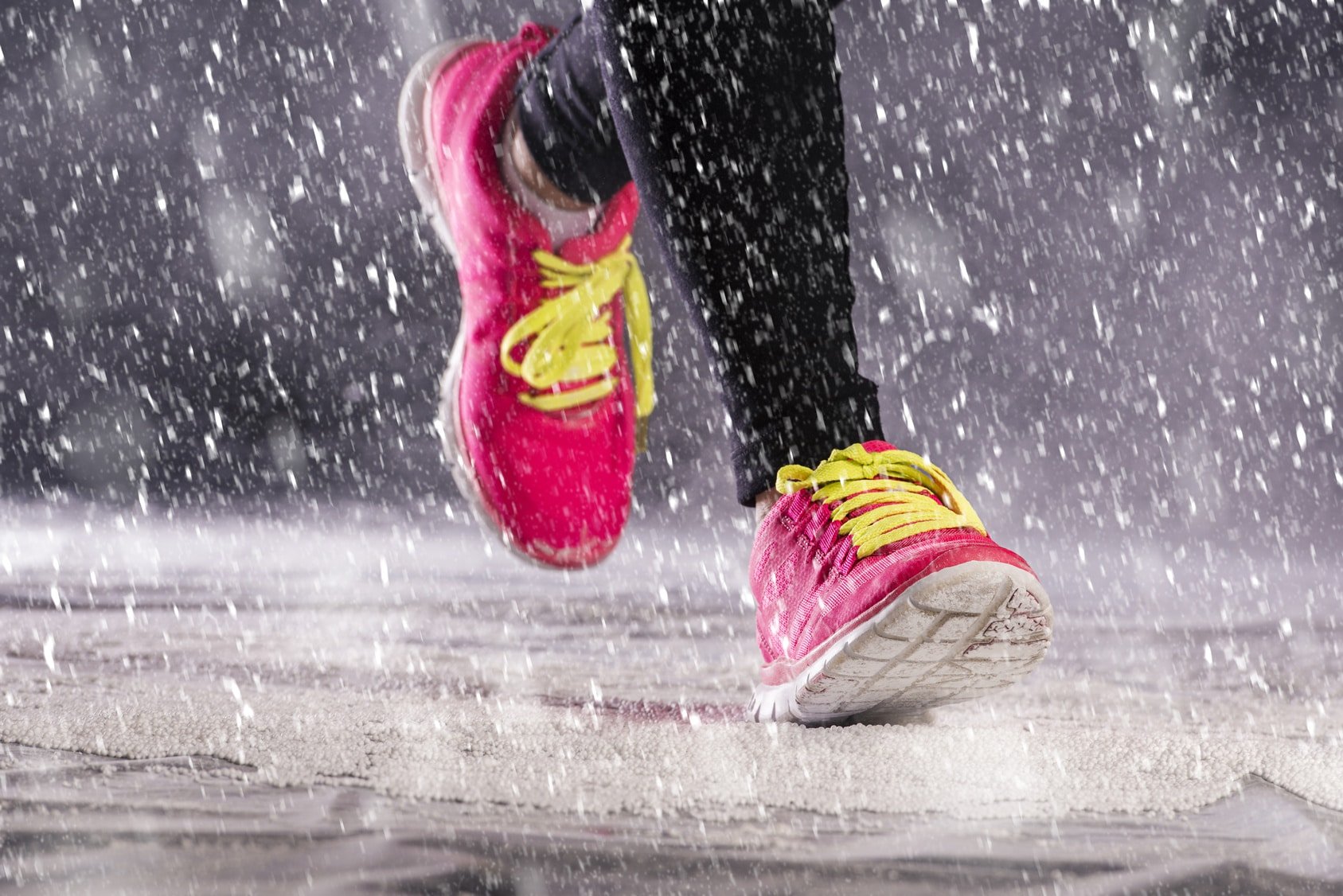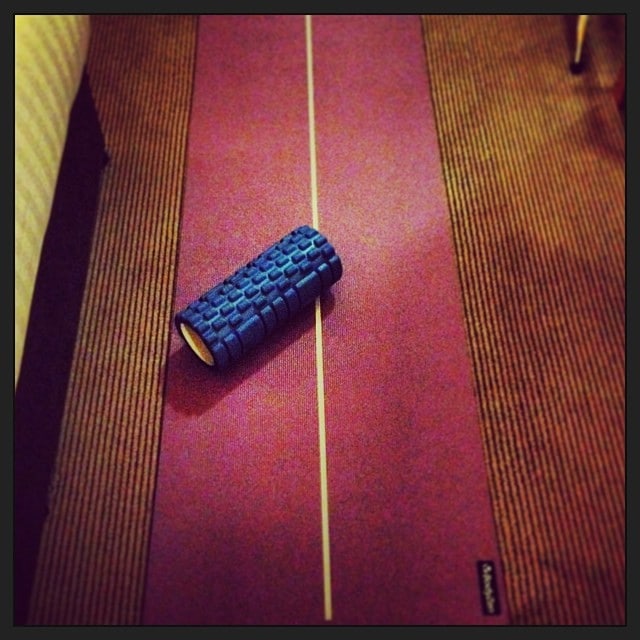Picture this: You’re gearing up for an epic vacation, whether it’s conquering mountain trails or basking in the sun-kissed glory of a pristine beach.
But there’s a question looming: Should you hang up your trusty running shoes for the duration? Hold on tight, because we’ve got a tale to tell that might just change your vacation game!
Let’s rewind a bit. I’ve been there too—standing at the crossroads of wanderlust and running passion, wondering if they could ever coexist.
For the longest time, my vacations sounded the retreat for my running routine. But hey, guess what? It doesn’t have to be that way. Not anymore.
Join me as we venture into the realm of running while traveling, a journey where exploration and fitness intertwine like the threads of a finely woven tapestry. Pack your curiosity, your enthusiasm, and yes, those trusty sneakers, because we’re about to embark on an adventure that will keep you moving even as you explore the world.
Ready? Let’s go
Have a Plan
So, you’re stepping into the unknown – new landscapes, fresh horizons, and untrodden paths. But don’t let the unfamiliarity of your vacation spot throw you off your running game.
In fact, let’s turn this challenge into an exciting quest!
Imagine your vacation plan as a treasure map, and your runs are the gems waiting to be discovered. As you’re mapping out the must-see attractions and mouthwatering eateries in your destination, don’t forget to earmark some routes that your running shoes can’t resist.
Think about it – just like you wouldn’t wander aimlessly in a new city without a plan, your running escapades deserve the same respect.
A little research goes a long way: explore the local parks, scenic trails, and pedestrian-friendly zones that promise both safety and stunning views. And hey, who knows, you might stumble upon that hidden gem only the locals know about!
Don’t worry, you don’t need to memorize every nook and cranny. But having a rough idea of your running playground adds a dash of confidence to your stride. After all, getting lost in a city’s charm is charming, but getting lost during a run? Not so much.
And if you’re caught in a conundrum of route-less wanderings, fear not! Seek solace in the embrace of a nearby park or a leisurely pedestrian trail.
These safe havens not only offer a pathway for your run but also a space to soak in the essence of your destination. Remember, whether it’s an urban jungle or a coastal haven, every place has a rhythm, and your running shoes are about to dance to it.
Here’s how to overcome your running excuses.
Pack Everything For your Run-Vacation
Picture this: you’re on the brink of a thrilling adventure, your vacation on the horizon. You’ve got your passport, your sunblock, your favorite novel – but what about your running spirit? Just because you’re on a break doesn’t mean your running shoes should take one too. It’s time to pack smart and ensure your running routine joins you on your journey.
Think of packing for your vacation as assembling the armor of a modern-day explorer. While you’re no knight in shining armor, you’re definitely a guardian of your running goals. Trust me, this preparation is no broken record; it’s the symphony of success you’re orchestrating.
Whether you’re jetting off for a few days or a couple of weeks, carve out a space in your suitcase for your running essentials. Yes, I’m talking about your trusty running gear. Just like your vacation wardrobe, curate a collection that suits the weather and terrain of your destination. A few modest running outfits, including your favorite T-shirt, a couple of pairs of shorts, and those reliable running socks, should do the trick.
And let’s not forget about the tools that make your running experience smoother than a well-paved trail. Your running shoes? Non-negotiable. Pack them first, like the foundation of a grand adventure. And if your runs are taking you into the moonlit hours, reflective high-viz clothing and a trusty headlamp are your guiding stars.
Oh, and we can’t overlook the power of technology. Your GPS device, running watch, and even your shades are part of your running arsenal – think of them as your map, compass, and shades of victory.
Running fuel is like the energy source for your expedition, so pack some along. It’s like the snacks a knight would carry on a long journey, fueling every step of the way.
Now, here’s a golden nugget: to keep your other belongings from catching a whiff of your running conquests, place your sneakers in a bag and toss in a dryer sheet. Your bag becomes a fortress of freshness!
One more pro tip – designate a special pocket in your bag for your sweat-soaked gear. It’s like having a chamber of secrets that separates the clean from the dirty. Your vacation clothes will thank you!
Choose Light Running Shoes
Imagine this: you’re about to embark on a journey where every ounce counts. You’re not climbing mountains, but you are conquering new horizons – running trails, bustling streets, and maybe even a sandy shoreline.
In this expedition, your running shoes aren’t just shoes; they’re your trusted companions. So, when it comes to footwear, think of it as the art of strategic selection.
While your vacation luggage is a mosaic of essentials, your running shoes are the masterpiece that holds it all together. Here’s the secret: opt for lightweight running shoes that are as versatile as they are efficient. Think of them as the swift steeds of ancient knights – light, agile, and ready for action.
Why the emphasis on weight? Well, those extra ounces might seem innocent, but trust me, when you’re traversing unfamiliar terrain, every gram matters. Aim for running shoes that weigh around 10 ounces or less. These featherweight wonders will ensure your luggage doesn’t get weighed down by unnecessary bulk.
But it’s not just about weight; it’s about functionality too. Your running shoes should be more than just aesthetically pleasing; they should be a harmonious fusion of form and function. A flexible midsole, collapsible heel structure, and semi-flexible upper section – these are the elements that transform your shoes into adaptable companions.
Consider them the key to unlocking new experiences. With each stride, they propel you forward, adapting to every twist and turn like a loyal partner. Just as a knight’s armor is designed for protection and mobility, your running shoes are engineered to provide both support and agility.
Double Up
Imagine having a pair of running shoes that are like chameleons – seamlessly adapting to any situation, whether it’s hitting the pavement or strolling through local markets. It might sound like magic, but it’s all about strategic thinking and the art of pairing versatility with style.
Think of your running shoes as the versatile companions that effortlessly switch roles from trail conquerors to city explorers. Imagine a pair that not only enhances your performance but also complements your everyday look. It’s like having a pair of shoes that are as comfortable at the track as they are at the café.
The trick here is to find running shoes that effortlessly transition from sporty to casual. It’s about choosing a pair that can be as comfortable on a morning jog as they are during an afternoon of sightseeing. By doing so, you’re not just packing a pair of shoes; you’re unlocking a world of possibilities.
By doubling up on your footwear, you’re also making a strategic move for your luggage space. Think about it: instead of carrying an extra pair of shoes for casual outings, you’re keeping your running shoes on, saving valuable space for souvenirs, essentials, and maybe even a spontaneous treasure you stumble upon.
Consider it a blend of convenience and cleverness. With your running shoes on your feet, you’re primed for any adventure that comes your way – whether it’s a sprint through a local park or a leisurely exploration of hidden gems. It’s like having two companions in one – a running partner and a stylish mate, all rolled into the same pair.
Connect With The Local Running Community
Whether you’re an introvert or an extrovert, there’s a thrilling world of camaraderie waiting for you – all you need to do is take that leap and join the running tribe.
Think of it as joining a pack of kindred spirits, all brought together by a shared love for the rhythmic pounding of the pavement. It’s like entering a secret society of joggers and sprinters, where the unspoken bond of running creates an instant connection, regardless of background or nationality.
You’re surrounded by fellow runners – some locals, some travelers like you. Together, you’re weaving through unfamiliar streets, discovering hidden gems that guidebooks might overlook. It’s like being part of a dynamic expedition, each step forging a deeper connection with the city and its inhabitants.
The beauty of running clubs is that they’re more than just about fitness; they’re about forging friendships that transcend borders. Imagine meeting a fellow runner who speaks a different language, yet you share laughs, stories, and the pure joy of movement. It’s like being part of a global relay, passing on the baton of inspiration and encouragement.
If you’re hesitant about joining a running group, think about this: runners are a diverse bunch, brought together by their mutual passion. They don’t care if you’re a seasoned marathoner or a newbie taking your first strides. To them, you’re a fellow traveler in the journey of miles and memories.
Use Google
Think of Google as your virtual compass, helping you navigate the uncharted territory of new destinations. It’s like having a trailblazer’s map that’s updated in real-time, showing you where fellow runners have tread before. With a few taps on your device, you’re transported from tourist to explorer, uncovering running gems that only the locals might know.
Imagine this scenario: you’re in a new city, eager to stretch your legs and explore. Instead of relying on serendipity, you whip out your smartphone and type in “Running in [Your Destination].” It’s like casting a net into the vast sea of the internet, and before you know it, a treasure trove of pre-planned routes, tips, and insights pop up, ready to guide your journey.
But remember, even the best-laid digital plans can encounter unexpected roadblocks. Blocked roads, construction zones, and detours might make your journey a tad more adventurous than anticipated. However, these hurdles are a golden opportunity to connect with locals. Imagine asking a passerby for an alternative route, sparking a conversation that reveals hidden gems not found in any guidebook.
Consider this: running while traveling has never been more accessible. With Google as your co-pilot, you’re equipped to explore landscapes, neighborhoods, and cultural corners that might have otherwise remained undiscovered. It’s like having a running companion who knows the city’s heartbeat and wants to share it with you.
Set A Schedule
Imagine your vacation as a symphony, each day playing a different tune. Amidst the sightseeing and relaxation, your running routine should harmonize seamlessly, not clash like a discordant note. That’s where the art of setting a schedule comes in – a rhythm that keeps you in tune with both your body and your destination.
Think of your schedule as a conductor’s baton, guiding your vacation’s tempo. It’s like orchestrating a melody that blends running with your explorations. You’re not aiming for a marathon-like sprint; instead, picture a leisurely jog through your vacation days, a gentle reminder of your commitment to health and well-being.
Consider this: you’re gazing at a breathtaking sunset in a faraway land. The last thing you want is to be preoccupied with running miles. Let go of the pressure, knowing that a few missed runs won’t mar the beauty of your vacation. It’s like savoring a delicious meal without counting calories – you’re indulging without losing sight of your well-being.
So, set your schedule as an affirmation of self-care. Picture it as a tapestry that weaves your vacation experiences and your running routine into a harmonious blend. Remember, you’re not sacrificing miles; you’re adjusting your cadence to embrace the rich tapestry of your adventure..
Race During your Holiday
Imagine your vacation as an epic adventure, and a race as a thrilling subplot that adds excitement and purpose to your journey. While leisurely strolls and exploration are wonderful, throwing a race into the mix can be like adding a secret ingredient to an already delicious recipe. So, if you spot a race that fits your itinerary, don’t hesitate – embrace the challenge, and let your vacation story unfold with a burst of energy and determination.
I remember my own unexpected race experience during my stay in Yogyakarta, Indonesia. I stumbled upon a local event that caught me off guard – a fun race that beckoned like a hidden treasure waiting to be discovered. It was like unearthing a rare gem amidst the cultural treasures of the city.
The story unfolded when I met a local girl who shared my passion for running. Through her, I learned about the impending race. Instead of sticking to my planned three-mile jog, I decided to dive into this unexpected adventure. The race brought a whirlwind of emotions – from excitement to adrenaline – and transformed my vacation into a memorable escapade.
So, if a race aligns with your travel plans, seize the opportunity.
Keep It Safe
As you embark on your run, your surroundings hum with the energy of local life. But your intuition is your best guide. Listen to the wisdom of the people who know these streets, who share their insights and advice. It’s like acquiring a treasure trove of local knowledge, ensuring you tread where your instincts guide you.
But there’s more to safety than practical measures; it’s about adapting to the local culture and customs. In lands where norms may differ, the key is to keep a low profile and respect the prevailing standards. Just as the attire of a traveler speaks volumes, so does the attire of a runner. For women, opting for modest attire – avoiding shorts, running bras, or tank tops – can help prevent unwanted attention and ensure that your dream trip remains just that – a dream, untainted by discomfort or distress.
As you set foot on foreign soil, remember that every step can be a dance with the unknown, and safety is the rhythm that guides your stride. Just as explorers of old navigated through new worlds with vigilance, let your running journey be a testament to your wisdom and care.
Keep it Simple
If all prove futile, keep it simple.
Just go out and make an out and back or just run laps around a nearby park.
This reduces your risk of getting lost.
Unless you don’t the attention to keep running while traveling, this last tip might be all you need.
Keep Running on Your Vacation – The Conclusion
There you have it.
The guidelines above should be the only measures you need to keep running throughout your vacations and trips.
Now it’s your turn.
Do you have any personal favorite tips to share with us?
I’d love to hear from you in the comments section.
In the meantime, thank you for dropping by.
Keep Running Strong.
David D.
















